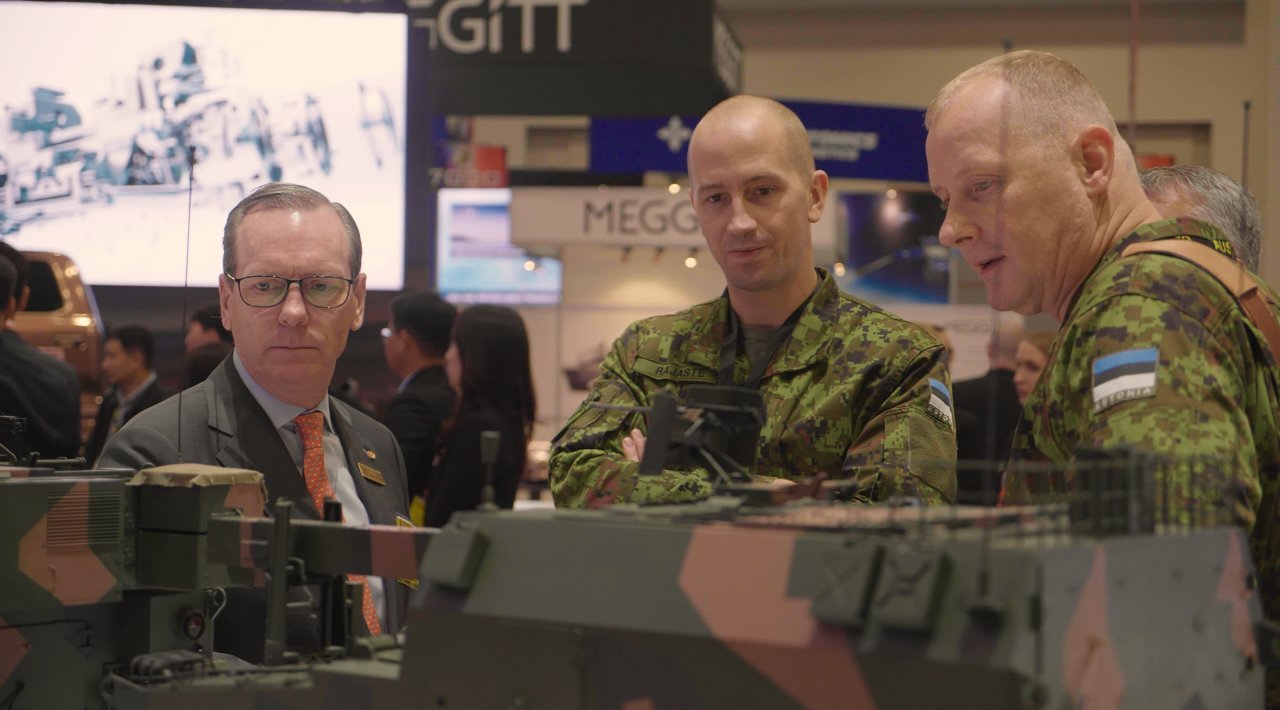The decadeslong standoff between the two Koreas has presented a struggle for Asia’s fourth-largest economy, but it has, ironically from a business perspective, ensured the continuous development of its defense industry.
One of the driving forces that has led the development of South Korea’s defense technology is Hanwha, a conglomerate that started as a gunpowder supplier in the then war-torn country 67 years ago.
It has since evolved into an energy-to-chemicals empire, but the defense business remains a great source of pride for Hanwha.
Under a government initiative to bring that technology to the global market, Hanwha is also expanding its presence overseas, particularly in the US, the world’s largest defense market. The company says it is ready to become one of the world’s top 10 defense companies within the next five years, and it has found the right person to make that happen.
Bernard S. Champoux, a retired US general, is in charge of Hanwha Defense’s US business headquarters and is tasked with introducing the company’s defense technology to the world. The senior executive vice president of Hanwha Defense is the first foreign general-level executive the conglomerate has hired.
“If I didn’t think that goal was possible, I wouldn’t be here. It’s going to take a lot of hard work and the dedicated effort of a large and talented team,” said Champoux in an interview with The Korea Herald.
 |
Bernard S. Champoux (left), senior executive vice president of Hanwha Defense, visits the company’s exhibition booth at the 2019 Annual Meeting and Exposition of the Association of the US Army, held in Washington last month. (Hanwha Defense) |
“I have been in the defense business for over 42 years, most of that time as a customer and practitioner. I understand the current operating environment and the complexities of the future and bring that knowledge and experience to the table as we connect with customers to help them solve their requirements with a quality solution.”
In terms of revenue, Hanwha’s defense units ranked 23rd last year, according to a survey by Defense News, a defense industry publication. By expanding its global operations in the US, Australia and the United Arab Emirates, the company plans to generate 12 trillion won ($10.35 billion) in revenue by 2025.
Of its many products, Hanwha’s best known is the K9 Self-Propelled Howitzer, which has been exported to six countries since 2001 -- Turkey, Poland, India, Finland, Norway and Estonia. Its latest product, the Redback armored car, was short-listed for Australia’s 5 trillion won armored vehicle project in September.
The list of products includes drones, bomb disposal robots and a command control system called C4I -- command, control, communication, computer and intelligence, a network-based integrated solution for the future battlefield environment. Its interoperability is an advantage that makes it possible to support joint military operations, according to the firm. The company has also developed distributed mobile base station equipment called DMC-LTE, which extends the network between base stations without separate transmission equipment, enabling multimedia transmission.
Hanwha Defense’s technological strength and its expertise in engineering were built in a country that is technically still at war, the executive noted, but also have been supported by the strong military alliance between Seoul and Washington.
“Important to realize Korea and Hanwha have built their defense capabilities facing the urgency of an existential threat,” he said. “They have also accomplished this while supporting the strongest alliance in the world by creating products and solutions that are interoperable with the most capable military in the world, the US.”
Amid continuing volatility in the geopolitical landscape, the market will see progressive technologies driving innovation in the defense industry.
“Believe you are going to see a more rapid inclusion of emerging technologies in future defense solutions. The relatively new US National Defense Strategy that focuses on overmatching peer competitors’ capabilities will drive innovation and push the fielding of next generation products with increased standoff, lethality and survivability,” he said.
“We’ll see the development of networks that will harvest capabilities from multiple domains. Also see the reliance on emerging technologies opens the field for small and medium enterprises and entrepreneurial startups to harness their innovation and to make a contribution to the solution.”
Before joining Hanwha in 2017, Champoux served nearly four years in South Korea, the country where his father fought during the 1950-53 Korean War as a company commander. From June 2013 to February 2016, Lt. Gen. Champoux commanded the Eighth Army while simultaneously serving as chief of staff for the United Nations Command, the ROK-US Combined Forces Command and United States Forces Korea. He received the Gukseon Medal, the Order of National Merit from the South Korean government and the Department of Defense Distinguished Service Medal for his contributions to the ROK-US Alliance.
Even though the executive is stationed in Washington, far away from Hanwha’s headquarters in Seoul, Champoux enjoys the team-building dinner with his South Korean colleagues, and he respects the Korean culture. But he disagrees with the argument that chaebol culture, referring to the extensive power given to a conglomerate’s owner family, is a hurdle to globalization for its companies.
“Not sure who ‘cites’ the chaebol’s corporate culture as the biggest hurdle to globalization, but that has not been my experience at Hanwha over the last two and a half years,” he said.
“Hanwha has been visionary, decisive and aggressive in growing globally and expanding in very competitive markets. I believe responsible globalization occurs in phases. We are currently a South Korean enterprise that operates globally. In time, as our presence and networks mature around the world, we will become a respected global company that adds value because of our customer intimacy.”
By Cho Chung-un (
christory@heraldcorp.com)








![[Today’s K-pop] Blackpink’s Jennie, Lisa invited to Coachella as solo acts](http://res.heraldm.com/phpwas/restmb_idxmake.php?idx=644&simg=/content/image/2024/11/21/20241121050099_0.jpg)